Recent Mold Remediation Posts
How to Identify a Mold Problem in Your Bountiful, UT Home
3/11/2024 (Permalink)
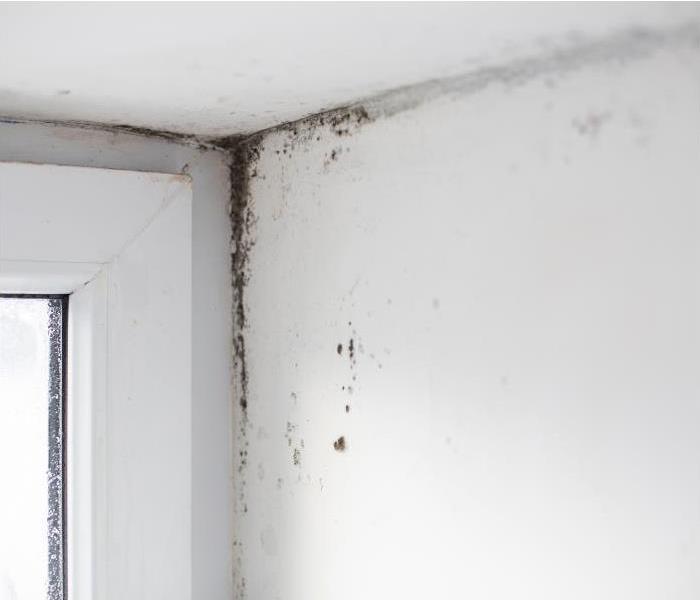 Mold problems in Bountiful, Ut
Mold problems in Bountiful, Ut
Living in the picturesque city of Bountiful, UT, surrounded by stunning landscapes and a thriving community, is a dream for many. However, even in this idyllic setting, homeowners may encounter challenges like mold growth. Mold is a common issue that can affect homes, posing potential health risks and structural concerns. In this blog, we will explore the ways to identify a mold problem in your Bountiful home and discuss the importance of prompt action.
Understanding Mold:
Before diving into the signs of a mold problem, it's essential to understand what mold is and why it can be a concern. Mold is a type of fungus that thrives in damp and humid environments. It reproduces through tiny spores that are invisible to the naked eye, making it difficult to detect in its early stages. Mold can grow on various surfaces, including walls, ceilings, floors, and even hidden spaces like crawl spaces and attics.
Signs of a Mold Problem:
Musty Odor:
One of the earliest indicators of a potential mold issue is a musty or earthy smell in your home. Mold releases volatile organic compounds (VOCs) that contribute to this distinct odor. If you notice a persistent musty smell, it's crucial to investigate further, as it could be a sign of hidden mold growth.
Visible Mold Growth:
Mold often appears as discolored patches on surfaces. It can be black, green, brown, or white, depending on the type of mold. Check areas prone to moisture, such as bathrooms, kitchens, and basements, for any visible signs of mold growth. Pay attention to walls, ceilings, and corners where moisture might accumulate.
Water Leaks or Moisture Issues:
Mold requires moisture to thrive. Therefore, water leaks or excessive moisture in your home can create an ideal environment for mold growth. Regularly inspect your home for leaks, especially around plumbing fixtures, roofs, and windows. Addressing water issues promptly can prevent mold from taking hold.
Peeling or Discolored Paint:
Mold can cause paint to peel or discolor. If you notice unusual changes in the appearance of painted surfaces, it may be a sign of mold growth beneath the paint. Investigate the affected areas to determine the source of the issue.
Condensation:
Excessive condensation on windows, walls, or pipes can create a conducive environment for mold. Inspect areas prone to condensation regularly, especially during colder months, and take steps to improve ventilation and reduce humidity levels.
Importance of Addressing Mold Promptly:
Identifying and addressing a mold problem promptly is crucial for several reasons:
Property Damage:
Mold can damage the structural integrity of your home. It can weaken walls, ceilings, and other surfaces, leading to costly repairs. Timely intervention can prevent extensive damage and preserve the structural integrity of your home.
Preventing Spread:
Mold can spread rapidly if left unchecked. Taking prompt action to address the issue can prevent the spread of mold to other areas of your home, minimizing the scope of remediation and reducing associated costs.
Living in Bountiful, UT, offers a unique blend of natural beauty and community spirit. However, even in this charming city, homeowners may encounter mold problems. By staying vigilant for signs of mold, addressing water issues promptly, and taking immediate action when mold is detected. If you suspect a mold problem, it's advisable to consult with professionals experienced in mold remediation to ensure a thorough and effective resolution. Remember, early detection and proactive measures are key to maintaining a mold-free home in Bountiful.
Prevent Mold Growth in Your Home
8/14/2023 (Permalink)
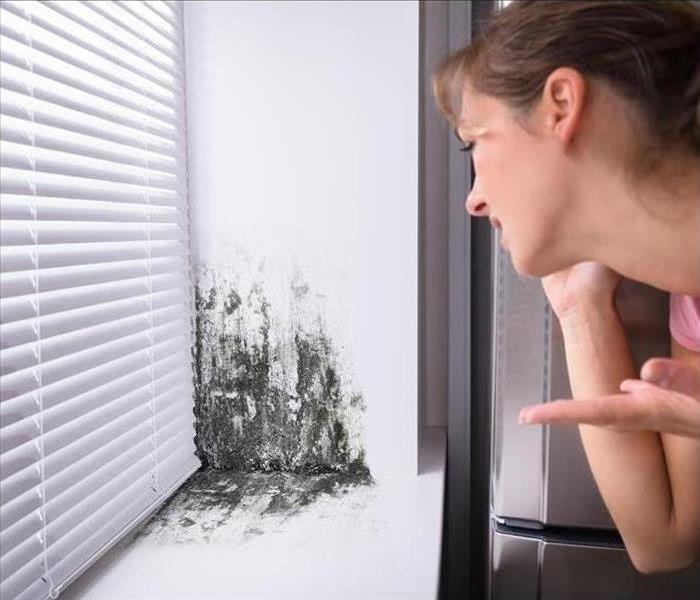 Mold expands quickly in moist environments if it is not removed in time.
Mold expands quickly in moist environments if it is not removed in time.
Mold spores travel easily from place to place and survive very well in environments with a little bit of moisture, so it shouldn't be surprising to find evidence of mold in your laundry room or bathroom. In fact, mold can grow anywhere that water damage occurs. Consider the following steps you can take to prevent mold growth in your Bountiful, Utah, home.
Respond Immediately to Leaks and Moisture
A glass of spilled water may quickly soak into the carpet. The resulting moisture in the carpet padding and wood flooring below the carpet is an ideal environment for mold. It doesn't take long for a wet spot to become a mold spot. Avoid water damage and mold with quick responses:
- Repair leaky faucets and pipes right away.
- Dry carpets and towels thoroughly.
- Put wet clothing directly into the washing machine.
- Clean and dry any wet surfaces.
If there are problem spots in your home, take steps to reduce the trouble.
Choose Mold-Resistant Products
For many homeowners, mold prevention begins after mold has already made an appearance. After mold cleanup and remediation professionals complete their work, use mold-resistant drywall, paint, and other products to reduce the chance of new growth.
Reduce Humidity and Increase Ventilation
Humidity levels vary naturally during the seasons and can also increase during the day during meal prep and laundry tasks. Opening the windows is an effective way to reduce moisture. If you don't want to open the windows, consider the use of a dehumidifier or fans. Leave interior doors open to increase airflow throughout your home.
Maintain Your Home and Landscape
Water from sprinklers or rainstorms should flow away from the home. If your landscape doesn't keep water away from the foundation, make adjustments. Regularly check your rain gutters to keep them clean and unclogged.
The care and maintenance involved in protecting your home from other problems can also help you prevent water damage and mold growth. Your consistent efforts could save you from a lot of expensive repairs.
How To Assess Mold Damage
3/21/2022 (Permalink)
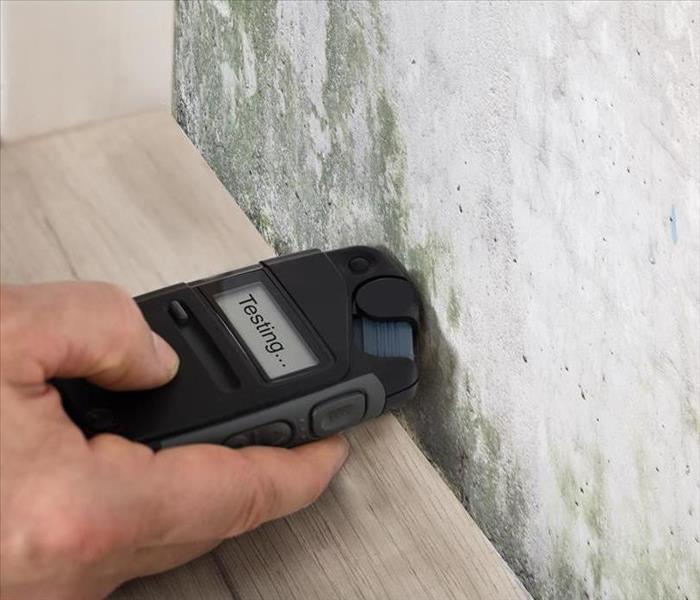 Learn More about Mold Damage and receive the Best Assessment by Following These Tips.
Learn More about Mold Damage and receive the Best Assessment by Following These Tips.
Whether you just smell the distinctive musty odor of mold or see visible spots in your Bountiful, UT home, determining the extent of the damage isn’t always easily apparent. Mold and mildew may easily spread to other areas of the home, as well as be lurking behind walls, under flooring and in other areas that are hard to reach or see. To ensure the best air quality and to protect the home, it is recommended to get a mold assessment from a professional mold damage company.
Why Get an Inspection?
If you think you have a lurking fungi issue, do you know what kind it is? While some are fairly harmless, black mold is not a type you want to spread in your home. A professional inspection not only helps determine the mold species but also helps with the following:
- Pinpoints the location of the mold growth, as well as how big the problem may be.
- Determines the number of spores that are airborne and circulating in the home.
- After remediation, it provides peace of mind that the problem has been properly eradicated.
What Does an Environmental Hygienist Test?
A mold assessment should always be done by a certified specialist. This will ensure that they have the proper training and tools to help you solve your mold issue. As part of the inspection, they will conduct tests to find the moisture source, estimate the size of the impacted area and identify the type of molds found.
To assist in the process, environmental hygienists have an array of industrial tools to ensure the best results. This includes a laser particle counter to check air quality; moisture meters to locate areas with high moisture levels; hygrometers to test humidity, dew point and temperature; and infrared cameras to identify areas with high temperatures or elevated moisture levels. A professional will conduct the following tests:
Air:
This determines how concentrated the spores are. This is an especially important test when there are no visible signs of growth.
Surface:
Swabs, tape and other tools are used to take samples throughout the home. Since mold forms where it has the right conditions, it could be growing in different parts of the home. These tests help determine how many spores and how much mold may be growing.
Bulk:
Although not always necessary, this involves removing materials from the home to be tested in the lab to determine how concentrated mold particles are in the home.
Culture:
In the lab, the samples taken from the home are purposely nourished to create a colony. This enables the professional to verify which mold species is in your home.
Once the assessment is completed, a specialist will provide an overall plan of action for remediation and restoration. During and after all the work is done, inspections are completed to ensure the cleanup is taking care of the problem and that the home is free of mold.
The home should be a safe, welcoming environment. When water damage is sustained, it means that mold may be hiding. A mold assessment helps determine how big of a problem you have and makes it easier to get a plan of action in place to remediate it.
How To Remove Mold From Air Conditioner Ducts
11/9/2021 (Permalink)
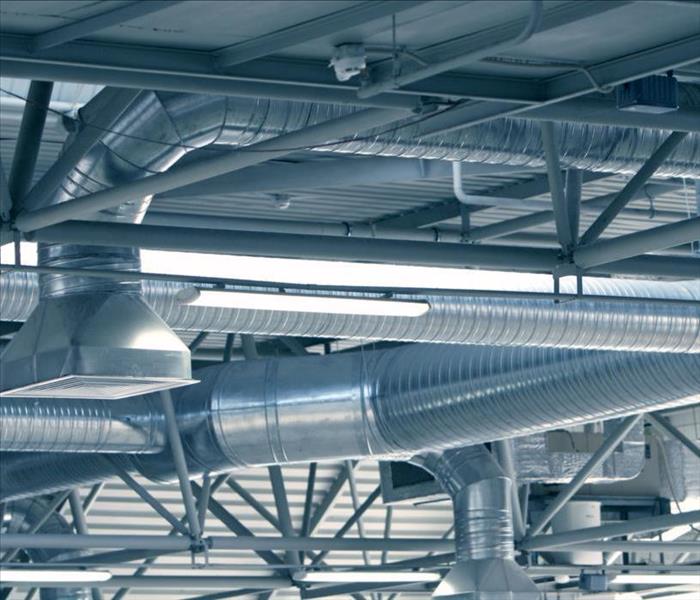 Clean the mold in the air conditioner ducts to avoid the spread in your Bountiful, UT building.
Clean the mold in the air conditioner ducts to avoid the spread in your Bountiful, UT building.
Molds, such as black mold, are always present in the environment. When molds encounter areas with the right conditions, they may multiply to the point where they become an issue for building owners. Dust and moisture in the vents of an HVAC system can provide a fertile breeding ground for mold. If not removed promptly, the forced air from an HVAC system may spread mold to the rest of your building.
Removing Black Mold From HVAC Systems
Eliminating mold from an HVAC system is a multi-step process.
1. Confirm You Have a Mold Problem
Before you spend time and money attempting to eliminate a mold problem, it is a good idea to confirm that you have one. Inspect your HVAC system for signs of mold and moisture. Additionally, you may notice mold signs throughout your building. A musty odor is often one of the first signs of a problem. You may also notice stains or dark spots on walls, ceiling tiles, or carpets. Pay particular attention to any areas with high moisture levels, such as kitchens and bathrooms, or water damage.
2. Remove Moisture
Shut down your HVAC system. Make sure anyone working on the HVAC system is equipped with an N-95 respirator. Remove and replace filters or insulation that is wet. Use a wet/dry vacuum to remove any standing water in the air ducts. Repair anything that is leaking or any drainage systems that are clogged.
3. Clean the System
Thoroughly cleaning your HVAC system will help remove mold and dirt that provides food for mold growth. Use a disinfectant that is registered with the EPA and labeled for HVAC use. Use a mechanical coil cleaning system to remove debris from the evaporator coils. As you clean ducts, separate them with bladders so that spores from the ducts you are cleaning don't spread to the ducts you already cleaned.
4. Prevent Mold From Returning
Prevent mold from coming back by applying a mold and mildew inhibitor to all parts of your HVAC system. Choose a product that is EPA registered and labeled for HVAC use.
5. Vacuum the Ducts
Use a vacuum with a HEPA filter to remove any debris left behind from cleaning.
Prevent Future Mold Problems
Controlling moisture is the key to preventing future mold problems in your HVAC system. Contact an HVAC repair company in Bountiful, UT, to diagnose and repair the issues that caused your system to accumulate moisture. Make sure your drain pans are properly sloped and regularly cleaned. Replace your air filters regularly. Keep areas below air intake clean and free of moisture. Have your HVAC system professionally inspected at least once per year.
When To Call a Professional
Mold can be difficult to remove completely. If your mold problem keeps coming back, you may need to contact a professional mold remediation company to perform a thorough cleaning.
Molds, such as black mold, are a normal part of the environment. However, mold that grows rapidly can create problems for property owners. Removing mold and addressing moisture issues promptly is the key to avoiding additional damage to your building.
Mold Prevention Tips for Humid Climates
9/6/2021 (Permalink)
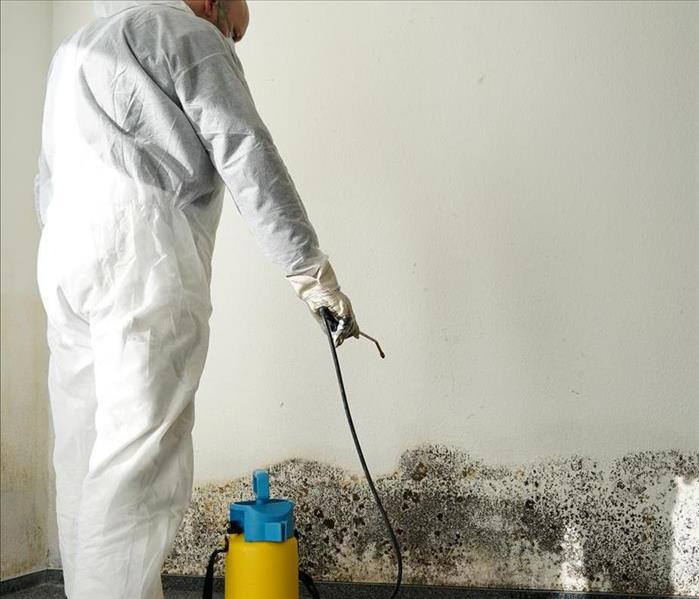 Protect your Bountiful, UT, building from moisture to prevent mold damage.
Protect your Bountiful, UT, building from moisture to prevent mold damage.
It's hard enough to keep your commercial building free of the effects of high humidity, but is located in a particularly humid climate poses extra challenges. It's not an impossible task, though. The following tips can help you protect your building in Bountiful, UT, against all the moisture in the air outside.
How to protect your building from moisture
Ensure Proper Airflow Throughout Building
The simplest way to prevent mold damage is to keep the air flowing throughout the whole building. Your air conditioner plays a huge role in this step. There are several ways to ensure your AC works consistently well:
- Make sure the system you install is the right size for your building
- Keep doors and windows closed while it runs
- Set the unit to automatic and the temperature to 70 degrees
- Inspect and maintain the system regularly
Make sure that your air conditioner vents are not blocked by furniture or storage, particularly the intake vents. Install exhaust fans in areas, such as bathrooms, where moisture tends to build up. An environmental hygienist can also complete an air quality test to find areas where better ventilation is needed.
Implement a Regular Inspection and Cleaning Schedule
Spores in the air are attracted to both moisture and dirt. While mold can grow on any organic material, keeping your building clean and dry is a strong line of defense. During walkthroughs, look for condensation on windows, pipes, and concrete walls. The presence of excess moisture in these areas may indicate that you need better insulation. Have all the surfaces in your building cleaned and dried on a daily basis. A vacuum with a HEPA filter is the best choice for ensuring that dust and other particles that can exacerbate mold growth are removed from the carpet.
Keep Humidity Level Low
No matter how clean or cool your building is, high humidity can lead to mold damage. You want to aim for a humidity level of 50% or below. Start by looking for items in your building that could contribute to excess moisture in the air. For example, potted plants are a common culprit, but that doesn't mean you need to get rid of all your live greenery. You just need to add anti-mold ingredients to the water you add to the soil. In addition to ensuring proper ventilation and airflow, you can also purchase dehumidifiers for each room to lower humidity levels.
Use Mold-Resistant Materials
Even if you take every precaution, you could still end up needing mold cleanup from certified mitigation experts in a humid climate. That's because furniture, curtains, carpet, and other textiles are particularly prone to fungus growth. Consider trading in some of the items in your building with similar pieces that are made of mold-resistant materials. Plastic, glass, and metal all have non-porous surfaces that make it more difficult for mold to grow. Laminate flooring does not have the same spore-catching qualities that carpet does. The furnishings you use can aid in your battle against mold.
If your area is prone to high humidity, you must be extra vigilant to prevent mold in your commercial building. By following these tips, you may be able to avoid major problems.
Prevent Mold for a Clean, Fresh Bathroom
3/18/2021 (Permalink)
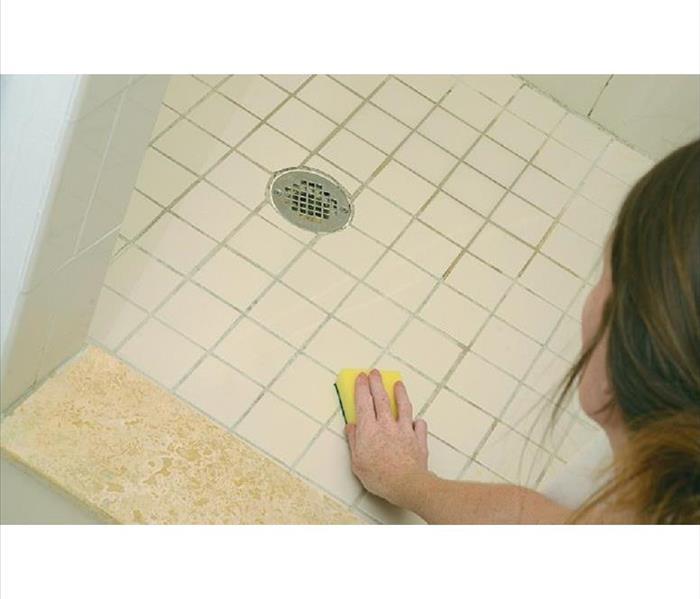 Mold thrives on moisture
Mold thrives on moisture
You can completely scrub down your bathroom every day, and it would still be a haven for mold. This is because mold is highly adaptable, and bathrooms are full of humidity. Additionally, water damage often occurs in Bountiful, UT, bathrooms before you're even aware of it.
Tips to Prevent Mold and Mildew in The Bathroom
Reduce Humidity and Moisture
The first step in reducing mold is controlling the level of humidity:
- Ventilation is the best way to reduce humidity. Install a bathroom that is easily switched on and off. Open windows when appropriate and leave doors and windows open.
- Use a squeegee to remove excess water from the shower, tub, and mirrors.
- Hang up towels and shower mats to dry, exposing them to ventilation.
- Install a dehumidifier in the bathroom.
These simple steps reduce moisture and protect bathroom surfaces from water damage. Don't forget to use a rag to wipe the floor dry.
Identify High-Risk Areas
The second mold prevention step is to identify the places where colonies are most likely to take root:
- Around the windows
- At the base of the toilet
- Under the sink cabinet
- On the ceiling and walls
- On shower curtains
- Under mats and rugs
- On caulking and grout
- Behind tiles, wallpaper, and other furnishings
Unfortunately, when spores have grown into colonies behind the walls or inside cabinets, you may not recognize damage until it has spread. You can, however, hire professionals once or twice a year to test for mold. If there's already damage, reach out to mold damage cleanup technicians to complete any reconstruction necessary.
Frequently Wash and Dry Fabrics
Finally, launder curtains, rugs, towels, and other bathroom linens frequently. Any absorbent materials can quickly become home to mold. (It only takes spores a couple of days to establish a new colony.) Adequate ventilation can aid in keeping the room dry, but it's best to wash items after multiple showers.
Water damage often leads to mold growth that must be treated in addition to other repairs. Take preventative steps to enjoy a clean, fresh room and to prevent unsightly mold and mildew.
Do You Need a Certified Mold Remediation Company?
1/22/2021 (Permalink)
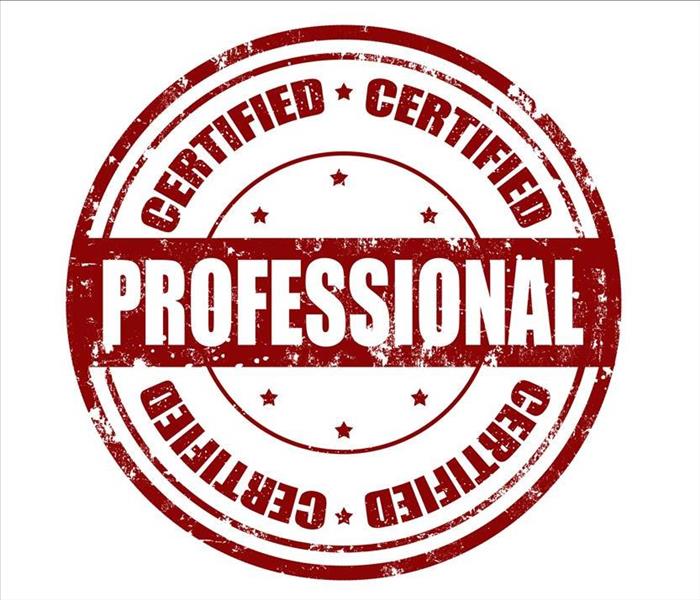 Mold can cause serious damage.
Mold can cause serious damage.
Because mold can cause serious damage to your home, it is important to hire a mold remediation professional with the proper experience and training to remove it. Mold remediation professionals are not required by law to hold any mold certification. However, hiring a certified professional provides you with the reassurance that the person you are working with has at least met the qualifications necessary to obtain the certification.
Types of Certifications
It is important to know which organization certified the contractor you plan to work with because the requirements for certifications vary. Several organizations offer certification:
- The Mold Inspection Consulting and Remediation Organization
- The Professional Mold Inspection Institute
- The National Organization of Remediators and Mold Inspectors
- RespirNet
- IICRC
What Certification Means
Mold certification means different things depending on which organization did the certifying because the different organizations set their own criteria. Some organizations require a college degree in a related field, such as engineering. Some require professionals to attend classes but do not require a degree, while others offer certification on the internet. When considering certified mold remediation in Bountiful, UT, ask which certifications your contractor holds, who issued them and what the criteria were.
Benefits of Choosing a Certified Contractor
Choosing a certified professional doesn't guarantee that the contractor will meet your expectations, but it does provide you with the reassurance that the technician has met the minimum qualifications to receive certification. Ask to see proof of certification and check references. If a contractor has both a valid certification and good references, there is a better chance you will be satisfied with the service you receive than if you hire contractors who can't prove their qualifications.
Mold certification isn't a guarantee, but it is a good way to verify that the mold remediation professional you are considering hiring has met minimum standards. Certification shouldn't be your only criteria, but it can help you make your decision.






 24/7 Emergency Service
24/7 Emergency Service





